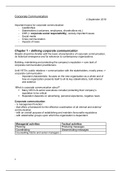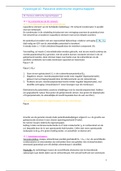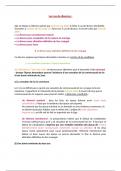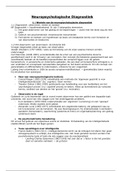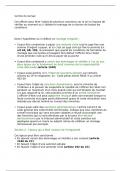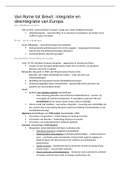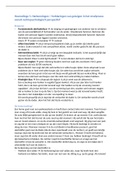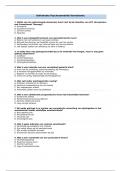4 September 2018
Important topics for corporate communication:
- Leaderships
- Stakeholders (costumers, employees, shareholders etc.)
- CSR (= corporate social responsibility), society-important issues
- Social media
- Crisis communication
- Impacts of news
Chapter 1 – defining corporate communication
Reader should be familiar with the basic characteristics of corporate communication,
its historical emergence and its relevance to contemporary organizations.
Building, maintaining and protecting the company’s reputation = core task of
corporate communication practitioners.
Until 1970’s: public relations = communication with the stakeholders, mostly press ->
corporate communication
- Important characteristic: focuses on the new organization as a whole and of
how an organization presents itself to all its key stakeholders, both internal
and external.
‘What is corporate communication about?’
Many CEO’s & senior executives consider protecting their company’s
reputation to be critical.
Reputation depends on advertising, personal experience, negative news
Corporate communication:
- ‘a management function’
- that offers a framework for the effective coordination of all internal and external
communication
- with an overall purpose of establishing and maintain favourable reputations
- with stakeholder groups upon which the organization is dependent.
Managerial activities Tactical activities
Planning Producing messages
Coordinating Disseminating messages
Counselling CEOs and senior managers
1
, Factors making corporate communication more complex:
- Different stakeholders, goals, etc.
- Wide geographical range
- Wide range of products/services
- Corporate headquarters and various divisions and business units
6 September 2018
Investors = important stakeholder group because of financial gains.
Key concepts:
Mission, vision, objectives, strategies
- Mission = the overriding purpose in line with stakeholders’ values and
expectations (who we are, what we value)
- Vision = the desired future state or aspiration of the organisation (what we
want to become)
- Objectives = the overall aims in line with the overall purpose (more specific
than the previous two; how we gauge our degree of success in accomplishing
our mission)
- Strategy = the ways or means in which the corporate objectives are to be
achieved and put into effect (how we will achieve our vision/objectives)
Corporate identity, corporate image, corporate representation
- Corporate identity = the profile and values communicated by an organization
- Corporate image (stakeholders’ perspective) = an individual’s immediate set
of association in response to (a) signal(s) or message(s) from or about a
particular organization at a single point in time
- Corporate representation = an individual’s collective representation of past
images of an organization (induced through either communication or past
experiences) established over time
Stakeholder, market
- Stakeholder = any group or individual who can affect or is affected by the
achievement of the organization’s objectives. (Differences between
stakeholders -> difficult for organizations to have a consistent reputation and
to keep all stakeholders content).
- Market (target groups) = a defined group for whom a product or service is or
may be in demand (and for whom an organization creates and maintains
products and services).
Communication, integration
- Communication = the tactics and media that are used to communicate with
internal (employees) and external groups (ex: investors).
- Integration = the act of coordinating all communication so that the corporate
identity is effectively and consistently communicated to internal and external
groups.
Trends in corporate communication:
Before 1980: fragmentation led to each department sub optimizing their own
performance.
Fragmentation (disadvantage: likely that each department optimizes its own
performance instead of working for the organization as a whole) -> procedures (like
communication guidelines) and coordination mechanisms (like council meetings).
2


